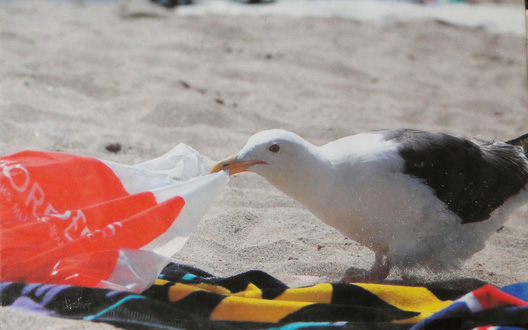
New reports suggest that over 90% of seabirds have plastic in their bodies. Researchers are alerting the public to the fact that there are over 360,000 pieces of plastic for every ONE square mile in the world’s oceans.
According to Discovery News: The amount of plastic ingestion by seabirds has dramatically increased in just the past few decades — 10 percent of seabirds were found to have plastic in their guts in the 1980s. The latest findings are published in the Proceedings of the National Academy of Sciences.

BYPASS THE CENSORS
Sign up to get unfiltered news delivered straight to your inbox.
You can unsubscribe any time. By subscribing you agree to our Terms of Use
Latest Video
“This really is an issue that concerns every single person, and their daily habits,” biologist Boris Worm of Dalhousie University, who authored an accompanying commentary on the new research, told Discovery News.
Chris Wilcox of CSIRO Oceans and Atmosphere Flagship and Imperial College London and colleagues Erik van Sebille and Britta Denise Hardesty conducted the research. They surveyed data on 186 species of seabirds, incorporating information on plastic pollution in the birds’ habitats, foraging strategies, body size and more. This was used to create a model predicting debris exposure for the birds.
The researchers next compiled studies of actual plastic ingestion by birds. The reports dated from 1962 to 2012. The statistical model and the other data show that if the same studies were conducted today, “the ingestion rate would reach 90 percent of individuals,” Wilcox and colleagues wrote.
The forecast is even bleaker for 35 years from now, if our habits not change.
“We predict plastics ingestion is increasing in seabirds, (and) will reach 99 percent of all species by 2050,” the authors wrote.
Based on the model, they believe the threat is greatest to seabirds located in the Tasman Sea, between Australia and New Zealand. In this location, there is high plastic garbage concentration mixed with high seabird presence, because birds have relied on the region for centuries for breeding, foraging and more.
As for why birds would even bother to ingest plastic, Worm explained, “They mistake them for food when skimming surface waters, searching for visible particles.”
“Birds ingest a wide variety of plastic items, including disposable lighters, toothbrushes, tampon applicators, light sticks (used in longline fishing) and broken shards of larger plastic debris.”
Worm said that much of the plastic in the ocean flows in from rivers, so the originating sources “could be way inland.”
In addition to eating plastic — which can lead to poisoning, blockage of the intestines and other problems — birds and other wildlife can be impacted by the materials even if they do not ingest them. Six-pack plastic holders, for example, have been found wrapped around the necks of birds, turtles and other animals, often horrifically deforming them or suffocating the victims to death.
Reducing our reliance on plastics combined with more effective waste management could reduce ocean pollution and the associated health threats to seabirds and other species, according to the scientists.
As Worm said, “The biggest single problem is the rapid economic growth and increased use of disposable plastics in many parts of the world, where the waste collection and management (such as safe storage and recycling) system has simply not grown at the same pace. That is, the waste is disposed anywhere, and not stored properly.”


